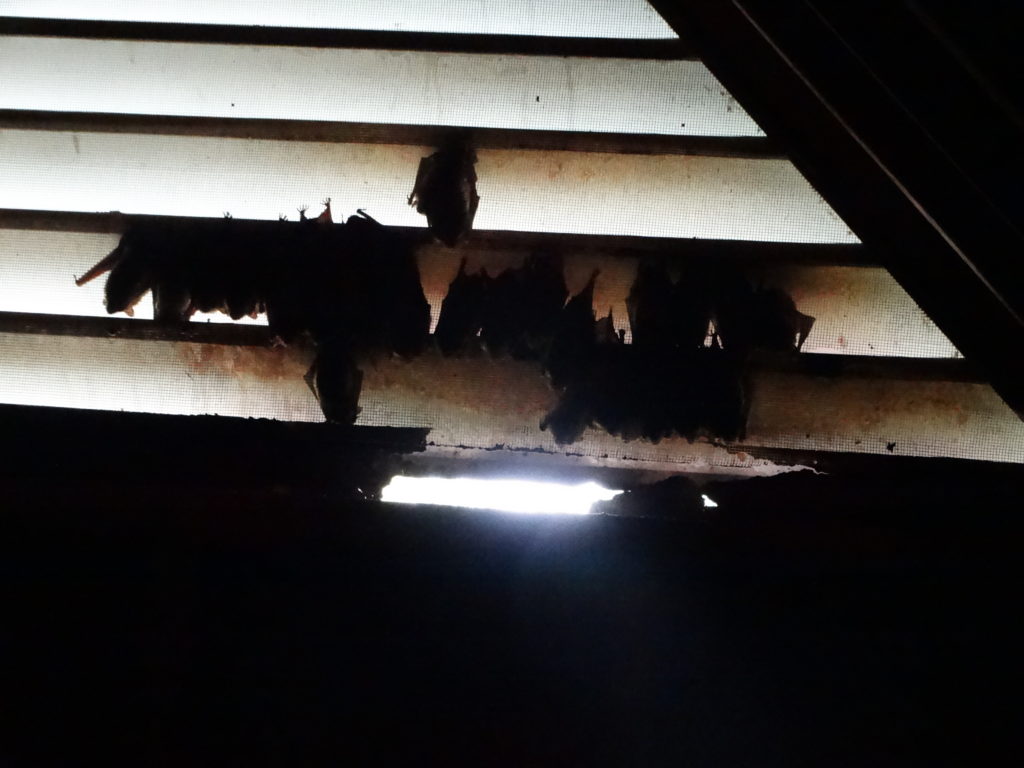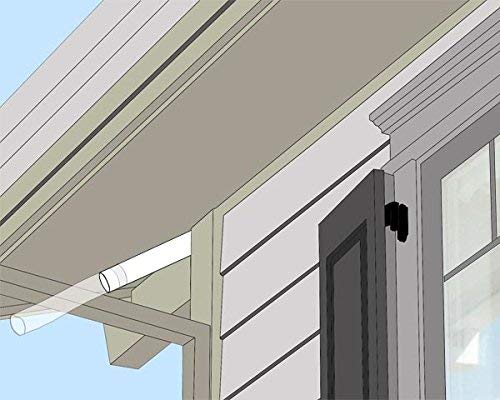After dusk you see them darting in and out of street lights. They love insects, night time skies and they particularly love your dark dry attic.
Bats are great for keeping the neighborhood bug population down, however there are few things to keep in mind when considering hosting a colony in your attic.

During a home inspection one of the first places I look is the gable vent. It’s a hot dry space, high enough off the ground for flight clearance and safe from predators. Bats can squeeze through very small holes and gaps – as small as a 1/2 inch. The vent slats are the perfect spot to chill out during the long hot days of summer.
Common Problems
Here’s a short list of the most common problems and issues:

- Buildup of guano (bat poop) inside the attic or walls or chimney is not healthy.
- Once nested – they can live there for a long time – some roost for decades.
- Bat colonies can get large – a group of 50 is not unusual.
- It’s uncommon for a large colony to produce a sharp pungent odor.
- If the colony is large enough their noise can become an issue.
- In the winter they hibernate from late fall (Oct/Nov) until spring (Mar/Apr).
- Health concerns can include rabies or histoplasmosis.
- They’ve been known to carry lice, fleas and other ectoparasites .
The action to correctly and legally rid your home of bats requires process called a live exclusion. A bat exclusion involves covering the openings of their entry and exit points with netting or tubes. The set up allows bats to drop down and fly out, but are unable to crawl back in.
Do They Pose a Danger?
Histoplasmosis is an infection caused by a fungus called Histoplasma. The fungus lives in the environment, particularly in soil that contains large amounts of bird or bat droppings.
In the United States, Histoplasma mainly lives in the central and eastern states, especially areas around the Ohio and Mississippi River valleys.
People can get histoplasmosis after breathing airbourne microscopic fungal spores.

Although most people who ingest the spores don’t get sick, those who do may have a fever, cough, and feel fatigued.
You’ll probably get better on your own without medication, but if you have a weakened immune systems, the infection can become severe.
My most recent encounter with bats in the attic included this gable vent. Obviously – the bottom of the vent is the bat door. While in the attic I also found a nice HUGE wasp nest – too bad bats don’t eat wasp.
Exclusion/Removal
A thorough bat removal and exclusion process includes the following steps:

- Thorough site inspection to locate bat access points
- Installation of one-way doors where necessary for approximately 7 to 10 business days.
- Seal entry/egress points
- Inspection of the site to ensure that all bats have been removed after a period of 7 to 10 days.
- Once determined that all bats have been eradicated from the building the one-way doors are removed and entrance way seal accordingly.
- Decontaminate and sanitize as needed.
Get Bats Out
I uploaded the bat glove photo (above) from www.getbatsout.com . They have a location right here in Central Mississippi – in Brandon.
Join my 9,000+ member Facebook group for homeowners and inspectors.
- - - - - - - - - - - - - - - - - - - - -